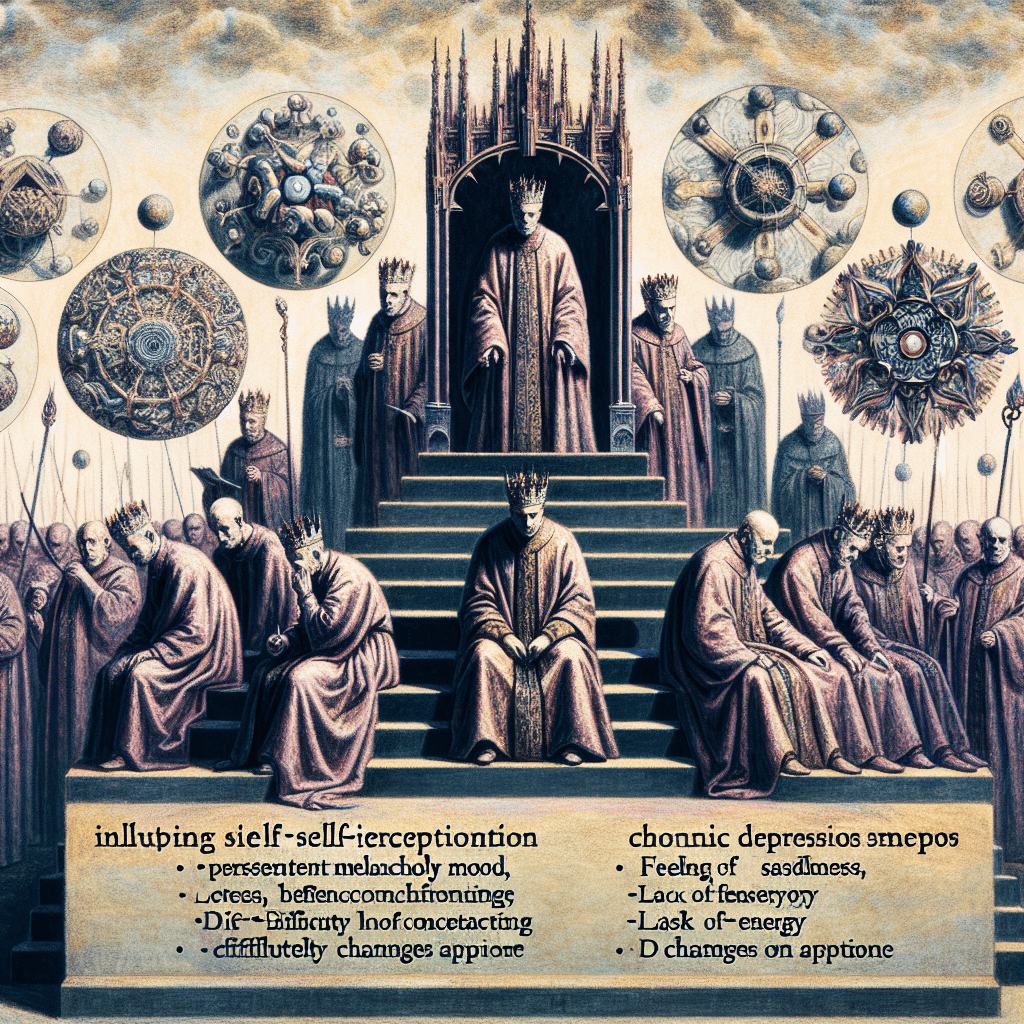Introduction
Picture your mind as a grand palace, where every thought, feeling, and perception plays its part on the vast stage of consciousness. Now, imagine that one day, a shadow descends over this regal domain, altering every script, skewing every perspective, and distorting how you see yourself and the world around you. This is the experience for many grappling with a major depressive episode, where negativity reigns supreme, often directed inwardly with destructive force.
In a world where emotions govern our sense of self, understanding how the mind processes self-related thoughts in the midst of depression is a vital step toward better treatment and support. A recent research paper titled ‘The Queen and I: Neural Correlates of Altered Self-Related Cognitions in Major Depressive Episode’ delves into this cerebral journey, revealing how depression tangibly changes brain function when we think about ourselves. Using advanced imaging techniques, researchers sought to answer a compelling question: What happens in our brains when we reflect on ourselves, particularly under the weight of depression?
Key Findings: Unveiling the Palace’s Secrets
Modern technology like functional magnetic resonance imaging (fMRI) allows scientists to glimpse the hidden corridors of our minds by observing brain activity under different conditions. In this study, researchers invited both depressed and non-depressed participants to engage in a series of exercises designed to evoke self-reflective thoughts.
The findings revealed a striking pattern: both groups showed significant brain activity in regions associated with self-referential processes, specifically the dorsomedial pre-frontal cortex and the posterior cingulate cortex. However, the primary difference lay in the level of activity in the medial superior frontal cortex. Those experiencing depression exhibited elevated activation in this area when engaging with self-referential tasks. This enhanced response was exclusive to the self-referential tasks, with no noted differences during tasks involving reflections about others.
This overactivation hints at a hyper-awareness of self, possibly explaining the pervasive and intrusive negative self-talk characteristic of depression. Imagine a royal advisor in your palace, intended to guide and support, but relentlessly drawing your attention to every flaw and past mistake. This might be how an exaggerated response in these brain regions affects someone with depression, clouding their self-perception with undue harshness.
Critical Discussion: The Mind’s Courtroom
The results of this study offer valuable insights into the neurobiological underpinnings of how depression impacts self-related thought processes. But what does this really mean beyond the brain scans? Historically, theories on depression, like Aaron Beck’s cognitive model, emphasize patterns of negative thinking about the self, world, and future. This study adds a biological dimension to these patterns, suggesting that they may originate in how certain brain areas are activated.
Previous research has indicated the role of the default mode network (DMN) in rumination, a common symptom of depression involving repetitive, often negative, thought cycles. The heightened activity observed in the medial superior frontal cortex during self-reflective moments might contribute to this broader network dysfunction, reinforcing the loop of self-critical thoughts.
Consider, for instance, an individual constantly replaying a negative comment or a perceived failure—for some, these moments become all-consuming. The study’s findings suggest that this heightened introspection could be hardwired into the way their brain is functioning during a depressive episode. By comparing these results with other research, it becomes clear that while the specifics of brain activation may vary, the overarching theme is the problematic nature of over-activation in certain areas during self-referential thinking.
Real-World Applications: Renovating the Mind’s Palace
Understanding these neural dynamics opens doors to potential interventions and better treatment strategies for depression. One practical takeaway is the development and enhancement of therapeutic approaches that target these specific brain areas. For instance, cognitive-behavioral therapy (CBT) already focuses on altering negative thought patterns, yet knowing its interplay with brain activity can refine and target techniques to be more personalized and effective.
Moreover, advanced therapies such as neurofeedback or transcranial magnetic stimulation (TMS) might be used to directly modulate activity in overactive brain regions. Imagine teaching the mind to regulate its own courtroom, reducing the clamor of undue self-criticism with a more balanced narrative of self-worth.
In everyday life, understanding that heightened self-focus during depression is not just a choice but an inherent brain pattern could promote compassion and support. Encouraging a less judgmental perspective toward oneself and others could alleviate some of the emotional burdens we unknowingly place on those struggling with depression. As we increasingly appreciate the biological basis of these experiences, our broader societal attitudes may shift towards greater empathy and support.
Conclusion: Redefining the Crown
In the intricate landscape of the mind, understanding how different triggers activate specific brain areas during a major depressive episode is crucial. The research paper ‘The Queen and I: Neural Correlates of Altered Self-Related Cognitions in Major Depressive Episode’ serves as a reminder that when we think of our minds as a palace, even the most shadowed corners deserve compassion and light. As we equip ourselves with knowledge and empathy, we can transform these regal yet troubled courts into sanctuaries of healing and hope.
Data in this article is provided by PLOS.
Related Articles
- How Babies Learn by Watching: Insights from Infant Brains
- ** Connections Between Aggression and Self-Injury in Teens: Insights from Chinese Adolescents
- Harnessing the Healing Power of Invisible Allies: Microbial Symbionts and Oxytocin**
- Bridging the Gap: Non-Specialists and Perinatal Mental Health in Low-Resource Settings**
- Healing Minds and Bodies: Exploring PTSD and Physical Dysfunction in Earthquake Survivors
- A New Lens on Autism: Exploring How Children with Autism See the World
- The Double Burden: Understanding Mental and Physical Health Connections in Urban South African Women**
